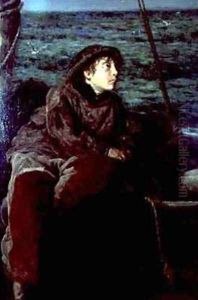Thomas Alexander Fergusson Graham Paintings
Thomas Alexander Fergusson Graham, often simply known as T. A. F. Graham, was a Scottish landscape painter who lived during the 19th century. Born on January 16, 1840, in Glasgow, Scotland, Graham developed a keen interest in art from an early age. His talent was evident, and he pursued his passion for painting throughout his life.
Graham began his formal art education at the Glasgow School of Art, where he honed his skills and developed a distinctive style. He was particularly influenced by the Scottish landscape, which would become a central theme throughout his body of work. Graham's paintings often depicted the rural countryside, showcasing his ability to capture the atmospheric effects of light and weather, which imbued his landscapes with a sense of mood and drama.
In the 1860s, Graham moved to Edinburgh, where he became associated with a group of artists known as the Edinburgh School. This group was characterized by their commitment to painting en plein air, or outdoors, directly from nature. Graham's approach to landscape was in keeping with this philosophy, and he often worked outside to produce sketches that he would later develop into finished paintings in his studio.
Throughout his career, Graham exhibited his work widely. He showed his paintings at the Royal Scottish Academy, the Royal Academy in London, and other important venues. His work was well received, and he gained a reputation as a skilled landscape painter. Despite his success, Graham remained focused on his art rather than self-promotion, which meant that he did not achieve the same level of fame as some of his contemporaries.
Graham's contribution to Scottish art was significant, and he was respected by his peers for his dedication and skill. He continued to paint until his later years, with the Scottish landscape remaining his enduring muse. Thomas Alexander Fergusson Graham passed away on December 17, 1906. Today, his paintings are held in various collections, including public galleries and museums, and they serve as a testament to his vision and love for the natural beauty of Scotland.



